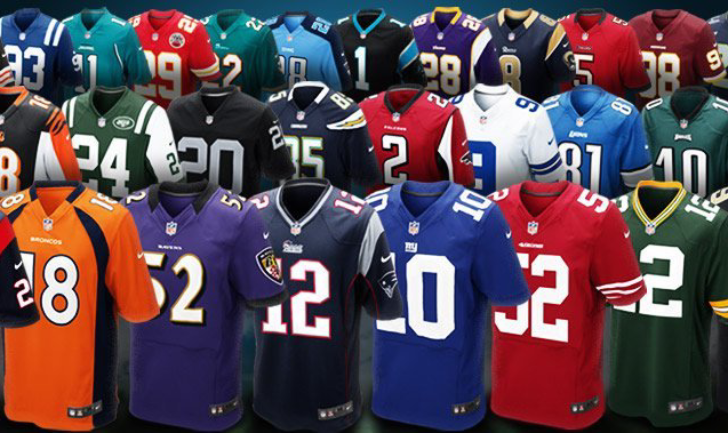Jersey Friday
Jersey Friday—officially known as National Jersey Friday—is a fun, sports-themed celebration observed on the first Friday of November each year. A day for sports fans to wear their favorite team jerseys—football, basketball, baseball, hockey, soccer, or any sport. Started by the NFL Players Association in 2015 to unite fans and celebrate team spirit during the height of football season. Show team pride and foster camaraderie among fans. Bring communities, workplaces, and schools together in a shared love of sports. Encourage conversations and connections around favorite teams and athletes

The history of sports jerseys dates back to the early 19th century and reflects the evolution of sports and the culture surrounding them.
Early Origins
19th Century: The first sports uniforms appeared in the mid-1800s. As organized sports began to gain popularity, teams sought to distinguish themselves visually. Early uniforms were often made of wool and were relatively simple in design.
Baseball: The first recorded use of a uniform in baseball was in 1849 when the New York Knickerbockers donned matching outfits. By the 1860s, other baseball teams started to adopt similar uniforms, often consisting of a shirt, trousers, and cap, each adorned with the team’s colors and name.
Development of the Jersey
1900s: The term “jersey” began to be associated with the knitted woolen shirts worn by athletes, particularly in rugby and football. The name is derived from the Channel Island of Jersey, where this type of wool fabric originated. Jerseys became popular in various sports, including soccer, basketball, and ice hockey.
Rugby: Rugby players were among the first to wear the heavy woolen jerseys. These jerseys were typically striped or featured the team’s crest, and they served a practical purpose by providing warmth and durability.
American Football: In the early 20th century, American football players began wearing jerseys with numbers on the back, a practice that became standardized by the 1920s. This made it easier for fans and officials to identify players during the game.
Mid to Late 20th Century
1970s–1980s: The sports jersey underwent significant changes, particularly with the introduction of new materials like polyester, which allowed for lighter, more breathable jerseys. This period also saw the rise of the custom jersey, with fans able to purchase jerseys featuring their favorite players’ names and numbers.
Marketing and Popularity: The commercialization of sports in the late 20th century led to jerseys becoming a popular fashion item. Athletes like Michael Jordan and Wayne Gretzky became icons, and their jerseys were highly sought after by fans, transcending the boundaries of sports culture and becoming part of popular fashion.
Modern Jerseys
Customization and Technology: Today, jerseys are available in a wide variety of styles, colors, and materials. Technology has allowed for advanced moisture-wicking fabrics and other performance features. Fans can also customize jerseys with names, numbers, and team logos.
Cultural Significance: Jerseys have become more than just sports attire; they are symbols of identity, loyalty, and community. Fans often wear them not only during games but also in everyday life, reflecting their connection to teams and players.
Globalization: As sports have become global, so have jerseys. Soccer jerseys, in particular, are worn worldwide, and major teams like FC Barcelona and Manchester United have massive followings.


